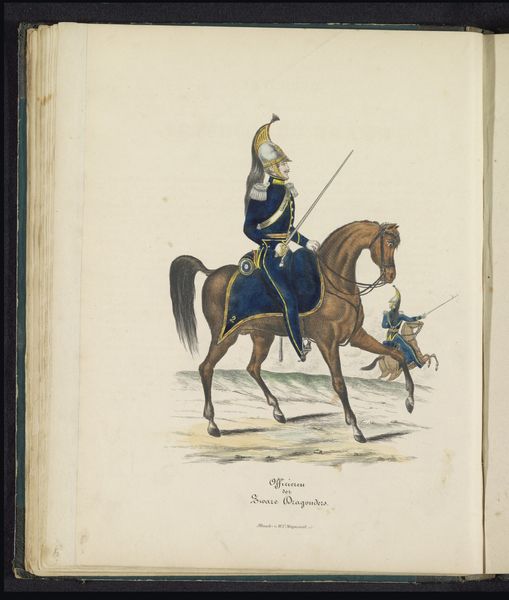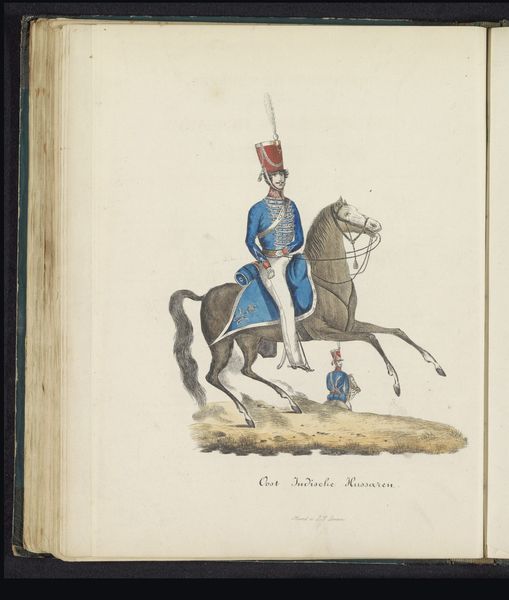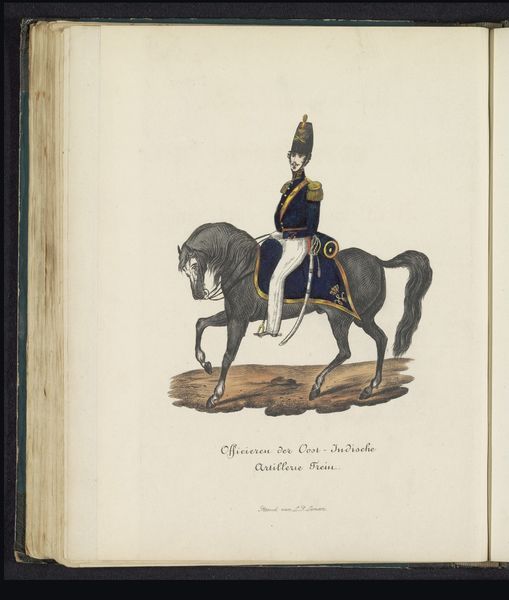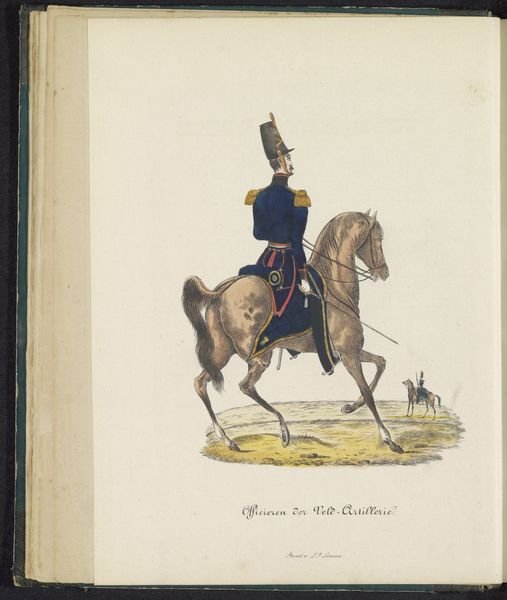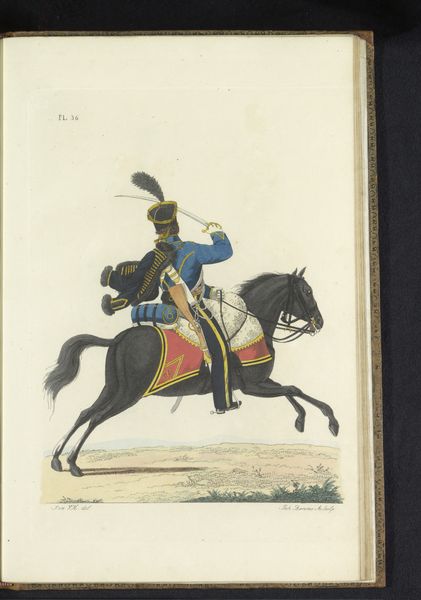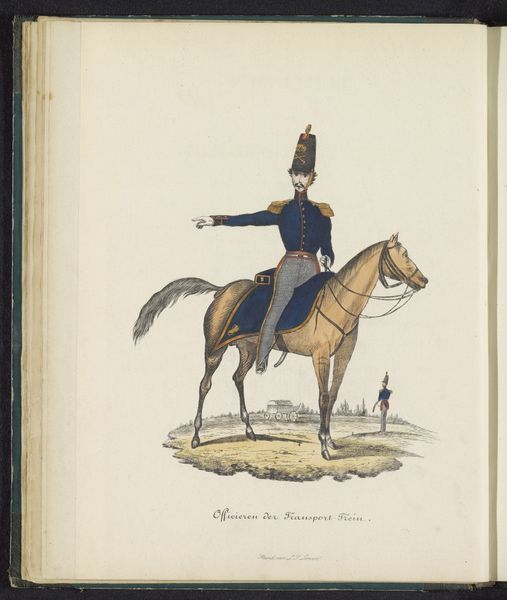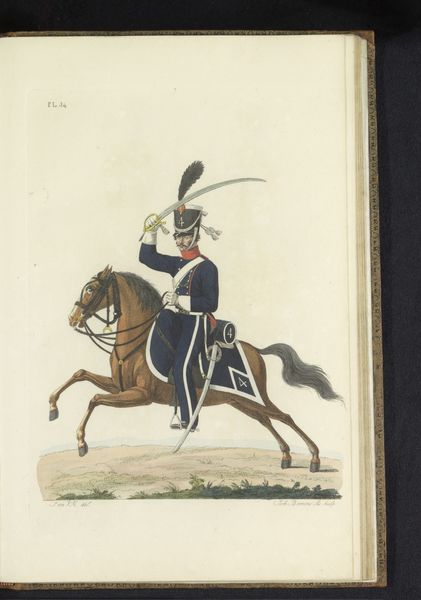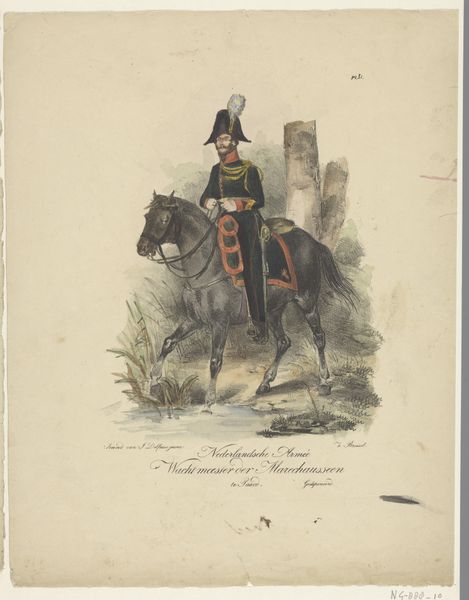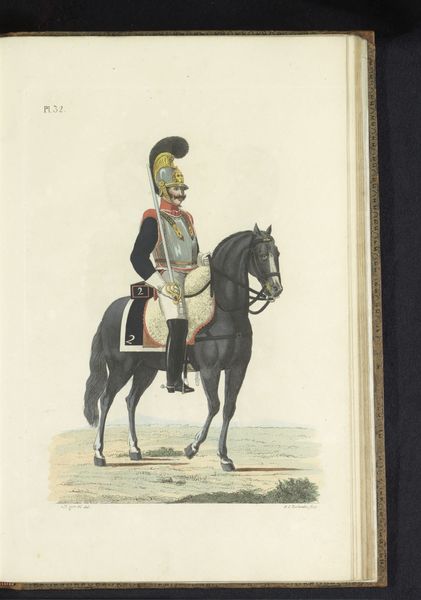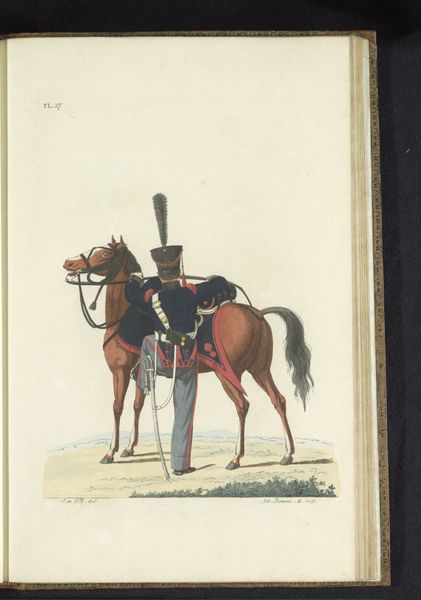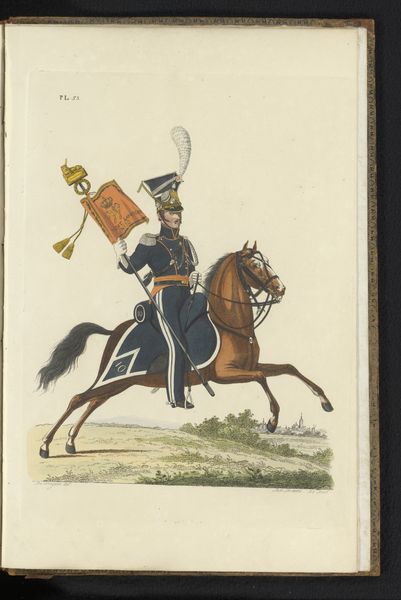
Uniform van de officieren van de lichte dragonders, 1845 1845
0:00
0:00
willemcharlesmagnenat
Rijksmuseum
painting, watercolor
#
portrait
#
narrative-art
#
painting
#
figuration
#
watercolor
#
coloured pencil
#
romanticism
#
pen-ink sketch
#
history-painting
#
academic-art
Dimensions: height 270 mm, width 200 mm
Copyright: Rijks Museum: Open Domain
Editor: Here we have Willem Charles Magnenat’s “Uniform van de officieren van de lichte dragonders, 1845,” housed here at the Rijksmuseum. It's a lovely watercolor painting, and it feels almost like a fashion plate. The detail is so precise. What story do you think it's trying to tell? Curator: Well, let's think about what stories get told, and by whom. Military imagery in the 19th century was rarely neutral. It served specific purposes. How do you see this piece fitting into those purposes? Editor: It makes me think about nation-building. All that precision definitely presents the military as professional. Does the medium, watercolor, suggest anything specific about the audience this was intended for? Curator: Exactly. Watercolor, often associated with more 'private' art forms like sketching or botanical illustration, offered a controlled and detailed image. And, considering the rising middle class and their fascination with social mobility and national pride, images of military officers could represent a desirable status, a very subtle and powerful recruitment tool. Consider the relationship between these uniforms, national identity, and power structures. Editor: That’s really interesting. I had not thought about that. I was just focusing on the "fashion plate" element and seeing the precision and craftsmanship in the rendering of the uniform. It didn't occur to me that these could shape national identity. Curator: It is easy to overlook how art promotes cultural values. Thinking critically about these paintings helps us understand the mechanics of image making. Editor: Thanks. I'll definitely keep in mind when looking at this period.
Comments
No comments
Be the first to comment and join the conversation on the ultimate creative platform.
